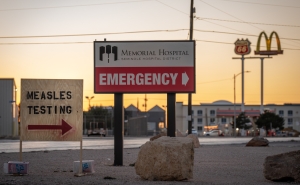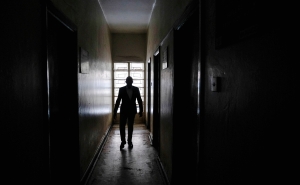Why Confirming The Origin of COVID-19 Matters

Until recently, there were multiple theories about the origins of SARS-CoV-2. Finger-pointing, politics, and mis- and disinformation soured the discussion, but researchers have continued to prod for answers.
A recent report in Science confirmed that a natural spillover emergence from a seafood wholesale market in Wuhan was the early epicenter of the COVID-19 pandemic. On the August 12 episode of Public Health On Call, biosecurity and immunology expert Gigi Gronvall, PhD, a senior scholar at the Center for Health Security and the author of “The Contested Origin of SARS-CoV-2”, discussed the findings and their critical importance for finally putting many of the early theories to rest, as well as future implications for policy, biological research, and public health surveillance.
Why was the origin of SARS-CoV-2 in question?
There has been a lot of evidence up to this point that the seafood market [in Wuhan] was the epicenter of SARS-CoV-2, but these recent reports are the death knell for any alternative theories.
The reason why people thought that it wasn’t the market was because the Wuhan Virology Institute—a laboratory where scientists study coronaviruses—is in the same city. People thought that it came from [that] lab.
But the evidence shows that the market was definitely the culprit, just as in 2003, when a live animal market led to the emergence of SARS—a smaller pandemic, but nonetheless very concerning.
What do we know about what happened at this animal market?
Three-quarters of the early cases had some association with the market and none had an association with the laboratory. Even though the market and the laboratory are both in Wuhan, they are in different parts of the city separated by a river.
There were also other indicators: There were two lineages—or two separate variants—of SARS-CoV-2 that were circulating in the early days of the pandemic. One of those became the pandemic [as we know it] and the other one died out.
But [the existence of two lineages] would mean that there would have to have been two introductions from a laboratory, versus an outbreak going on among animals and then spilling over multiple times to people.
The scientists looked for two things: tracking the early cases and evolution of the two lineages. They did a geospatial analysis which tracked cases that we knew about and pinpointed exactly where in Wuhan those cases were. They were even more tied to the market than previous indicators had suggested. The scientists looked at those two strains and [their] lineages to see how they evolved, which also tied it to an animal spillover.
They got down to the exact stall of where one of the positive environmental samples had come from. There had been a picture taken a couple of months prior where a raccoon dog had been sitting in said stall. Raccoon dogs are one of the prime suspects for where the virus came from.
We know that the coronavirus originated in bats. Could the raccoon dog have been the intermediary animal?
Correct. We think it’s a bat virus that spilled over into an animal population. This is a very permissive virus, what they call a “generalist virus,” that’s able to infect lots of different animals. Raccoon dogs are one of the animals it’s known to infect.
We don’t have [raccoon dogs] here in the U.S. They’re used for meat and fur [in China]. They were in poor condition, stuffed together in cages that were right next to each other—really not a good situation for limiting disease transmission and not taken care of as one would expect for a legal trade.
A lot of the animals in the market were not supposed to be sold there, but there have been reports since the pandemic with pictures taken right before [of] illegal animals were being sold.
The researchers pinpointed this emergence back to December, 2019 and, more than two and a half years later, they’re finally confirming it. Why did it take so long to get answers?
There’s been a lot of back and forth; a lot of propaganda and finger pointing, and nobody comes off looking great except, of course, the scientists who figured this all out.
In the early days [of the pandemic], the U.S. accused China of a deliberate attack. China, in turn, [claimed] the virus came from an army lab in Frederick, Maryland. There were lots of baseless accusations and the well was poisoned. Some of the things the former President said were racist and inflammatory, and not conducive to actually getting to the bottom of where the virus came from.
There was a WHO investigation and fact-finding mission where experts from all over the world went to China and looked at the early clinical data. They were not shown everything that they could have been shown, but the team produced a 150-page report. Many of the people who didn’t like the report didn’t bother to read it. [The report] produced a lot of information and said that [the emergence] was unlikely to be a [lab] accident.
China was really adhering to one theory that the virus didn’t come from China, but that it came from a frozen food importation from some other country. By frozen food—I mean a whole animal’s carcass [that was] frozen and imported.
There were a lot of counter narratives, misinformation, and disinformation all thrown at the question of where this virus came from.
Why is it so important to pinpoint this spillover event?
It’s really important to figure out why things happen so you can prevent them from happening again.
That’s certainly the case here. There are a lot of uncertainties in any investigation like this. People get sick with all kinds of things all the time, and you don’t think to record it in meticulous detail, because almost all the time it’s not important. The origins of many infectious diseases are a little fuzzy. This is the case with Ebola, the first cases with monkeypox—there’s a lot of uncertainty. But for a pandemic of this scale, we don’t want to leave the same conditions open for it to happen again.
What have we learned in terms of surveillance and virology from this that we can apply to future events?
We’ve learned a lot.
We have a mismatch in our capabilities and expectations. We have the potential to trace a virus being transferred from one person to another. There is no sample that we can’t analyze. What you can’t do is go back in time and [analyze] samples that no longer exist. We have this expectation that we can analyze everything to the ninth decimal point but, in a lot of cases, you can’t look at what you didn’t bother to collect.
We look where the light is, and we can see only what we know. There’s a lot in the natural world that we don’t know. People need to remember that there are a lot of viruses being passed between bats and animals that we are not looking at. We don’t know what’s brewing in that sea of genomic information. We may think we have a good handle on coronaviruses or flu viruses but there is a limit to how much we have been collecting. There’s a lot out there for people to discover.
The wet markets, with wild animals and humans in close quarters, seem to be a perfect confluence of all of these factors. Can they be made safer? What would be the impact of closing them?
There’s a lot of work that needs to be done to reduce demand and make the live markets safer and more regulated.
There is guidance for how you can have a live animal market with good biosecurity which, in this context, is keeping animals separate from each other. There are international organizations that are concerned with animal and food health, and they have guidance for where animals are butchered, fed, and where they defecate. This may seem obvious, but there are rules for how you do this.
What you don’t have by closing the wet markets is an off switch on people’s drive to have these animals. That change takes a lot of effort, and there’s a lot of money stacked against making these changes.
It’s been estimated that the illegal wildlife market in China alone ranges somewhere between $18 and $75 billion dollars per year. That’s bigger than the U.S. beef industry. [You can’t] ask a public health official to turn that off.
What is the next step for research here? Are there more implications from these findings?
There’s a ton of research that needs to be done, not just on coronaviruses, but all the steps involved here.
We have a lack of understanding about the animal vectors that have given us SARS-CoV-2, especially bats. [For example]: Why are they able to carry diseases and not get them themselves? We don’t have the research tools that are needed and not enough cell lines. There aren’t enough universities that are studying bats’ behavior. There’s a lot we don’t know about bats considering that we’ve had a lot of emerging infectious diseases through that pathway.
There’s also a lot we need to understand about live animal markets and how we are encroaching on bats’ territory, and what that will mean for other infectious diseases. This virus came via commercial sale of animals but humans are developing land that used to belong to bats, and or are getting very close to bat territories, which put us into contact with more potential spillover events.
A lot of the focus on the early origin story has been to demonize the scientists who do this work—those who actually study the transmission of novel diseases into populations, in particular a group called the Eco Health Alliance. But it’s a small field. This is an area that has immense consequences for the whole world and yet there are not that many people studying it.
Does this report shine a light on the need for critical research to prevent future pandemics?
Exactly. I hope that people will set aside the theory that the virus came from a laboratory, that they look at this evidence, and that it will be a step to trying to work on the next steps with China.
China is not the only country in the world with live animal markets and this potential for spillover. There’s a lot of work that should be done here in the U.S. as well as around the world to reduce the chances of this happening. But, right now, we’re not doing nearly enough. We’re barely doing anything.
Gigi Gronvall, PhD, is a senior scholar at the Center for Health Security and an associate professor in Environmental Health and Engineering at the Johns Hopkins Bloomberg School of Public Health.





